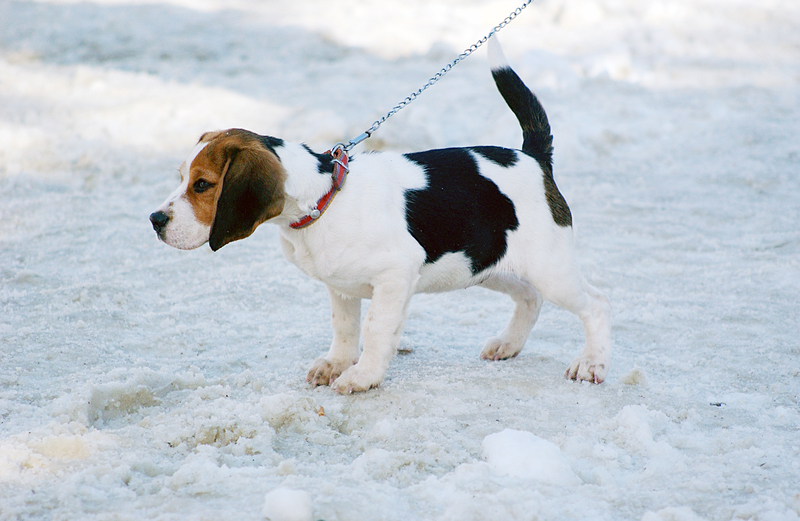Pet Safe Ice Melt

If you live in a colder climate that experiences snow and ice, it can be difficult to deal with the conditions while keeping your pet safe. The trouble comes when the snow is cleared, and the ice begins. The slipping and sliding while trying to get to the car or the mailbox can be treacherous.
Many traditional, salt-based ice melts work well but are made of calcium chloride or sodium chloride which can irritate a dog’s feet. Some can also be toxic if licked or ingested. Over the past several years pet friendly ice melts have become available. Most of these contain Urea (sometimes listed as Carbonyl Diamide or Carbamide Resin) which is safer for your dog, but less effective as an ice melt at lower temperatures than traditional salt-based melts. Read the label closely when buying a pet friendly melt. Some claim to be safe but remember there are no regulations products must follow to be called “pet friendly”.
If you want greater control over the ingredients in your ice melt, consider making your own. It is simple to do and less expensive than commercially available pet friendly products. In a bucket combine:
- a half-gallon of hot water
- six drops of dish soap
- ¼ cup of rubbing alcohol
This solution1 can be used in a sprayer on icy surfaces, including your car windshield. If you do not have a sprayer, a garden watering can be used. This works because the freezing point of rubbing alcohol is -128°F. Also, remember that sand and kitty litter are additional pet safe ways to provide traction but will not melt the ice.
To reduce the risk to your pet while outside in the winter, always supervise where they go. Since you can never know what type of ice melt your neighbors are using, always rinse or wipe your dog’s feet after a walk. For dogs that will tolerate them, or learn to tolerate them, booties are a nice option to protect their feet from ice melt hazards and the cold temperatures. For dogs that refuse to wear booties, using a lanolin or wax based product may help protect their pads. These topical products, however, do not provide any protection from the cold.
Keep your pet’s safety in mind for a happy and healthy winter season!
1https://www.rd.com/home/improvement/melt-ice-without-salt/
